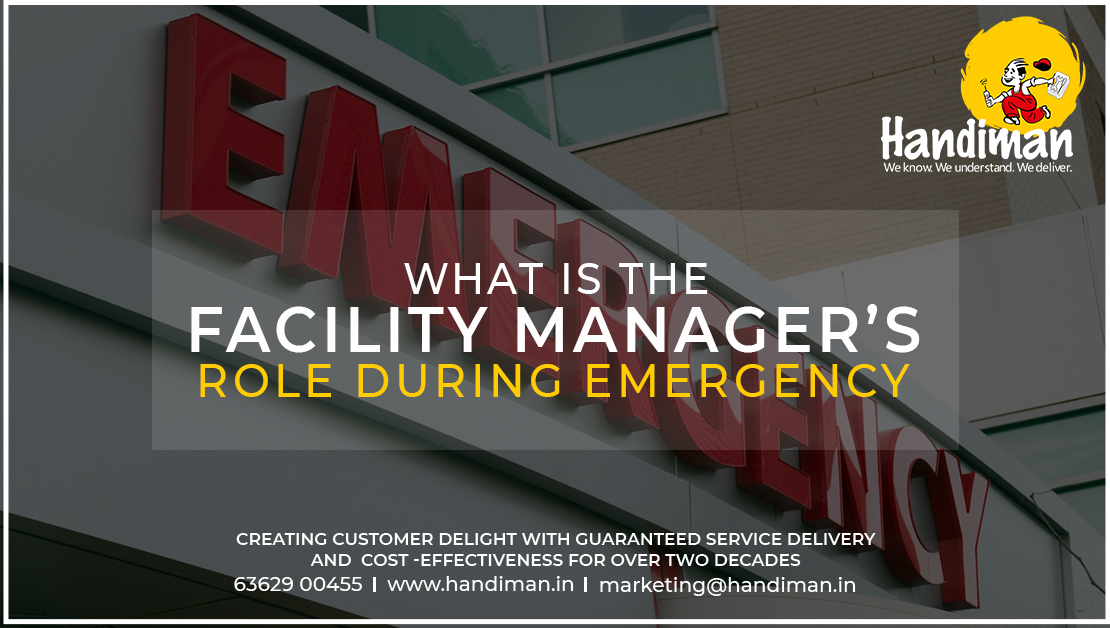
WHAT IS THE FACILITY MANAGER’S ROLE DURING EMERGENCY
Facility managers must be prepared for a variety of situations, including terror attacks, flooding, strikes, workplace violence, and much more.
However, in an emergency, Facility Managers must quickly gather resources and transport people as needed.
FACILITY MANAGERS HAVE A RANGE OF RESPONSIBILITIES IN A CRISIS
An overview of that manual's various obligations for an FM in an emergency is provided below:
- Everyone's role is explained by the FM so that they are all aware of what to do in an emergency.
- Mission-critical functions are identified by the FM, who also evaluates potential vulnerabilities.
- The FM assists in creating a preparedness plan and disseminating it to all owners, managers, and tenants, and uses drills to spot weak points in the plan.
- The FM adapts the plan as necessary by taking into account new circumstances, the evolving needs of building occupants, and stakeholder feedback.
Emergency Response Management: What is it?
Emergency Response Management, or ERM, is typically a collection of written instructions that outline the actions the FM team should take in various circumstances. A plan will typically include a guideline for classifying potential emergencies, recognizing and deciding how assets will be used, as well as some sort of constructing training that includes creating, practicing, and testing these plans.
Let's look at the four emergency management phases to take into account when creating an emergency response management (ERM) program and ensuring that the FM department and the organization are ready for unforeseen events.
1) Prevention and mitigation: The first stage of emergency management is prevention and mitigation. The term "prevention" describes the steps taken to lessen the likelihood that a situation or crisis will arise. Mitigation is the process of taking steps to lessen or even reverse the harm that an event or crisis causes to people and property, especially when it cannot be avoided.
The Facility Management department should perform a three-step risk assessment to prevent, reduce, or mitigate.
- Consider any real dangers and threats.
- Determine any weak points and the effects of any hazards.
- Report the risk assessment results, document them, and offer suggestions for the following actions.
2) Preparedness: In the event of an emergency, preparedness refers to the plans or procedures designed to minimize damage to physical assets and save lives.
- Establishing an incident command system by the National Incident Management System (NIMS) for coordinating the efforts of your organization's personnel and services in the event of an emergency is one example of a preparation activity.
- Negotiate contracts to get your organization the supplies it needs, like food, transportation, medical care, and volunteers.
Designate individuals to oversee each operation of the incident command system, and specify in the emergency plan who will be in charge if key leaders are not available.
3) Response: The plans and initiatives put in place to react to the event safely are referred to as the response phase. Every emergency in the facility requires clear communication about the situation and the best course of action. Every year, the response strategy should be reviewed.
4) Recuperation: Recuperation is a continuous process. Normal operations must be restored and established again during the recovery phase.
Important areas to think about include:
Establish the leadership of key personnel and the succession plans.
- Determine which technologies, services, and tools are most important for your business to maintain business continuity.
- Establish and record crucial service continuity plans for typical disruptions.
In conclusion,
If the facility management team considers these 4 phases when developing an Emergency Response Management (ERM) Program and preparing the Facility Management department and the organ organization for unforeseen events, it will be well on its way to ensuring the safety of the organization additionally, the facility management team must recognize and maintain the mission-critical systems.
An emergency power, water, HVAC, fire protection, lighting, fuel storage, and communication system must meet certain minimum requirements covered by national and local codes and standards.
